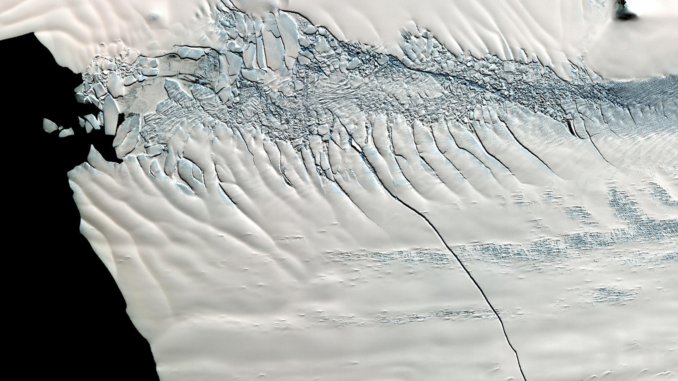
How can we attribute retreat of the West Antarctic Ice Sheet to climate change? Do we even know how to ask the question? We show how you can do this, combining multiple sources of ice sheet model uncertainty in this new publication “A framework for estimating the anthropogenic part of Antarctica’s sea level contribution in a synthetic setting“.
Climate change and the West Antarctic ice sheet
We don’t know the precise extent to which climate change is responsible for the ongoing changes to the West Antarctic Ice Sheet (WAIS). This is a huge question for the future of the WAIS: if climate change is largely responsible, it suggests we are still in control of the future… But, if not, sea level rise is likely committed. Figuring this out is also important for loss-and-damage funding, which requires such studies. It’s a hard physics problem: the region has high naturally occurring climate variability and tipping-points, which might be passed within natural variability. WAIS retreat was triggered ‘naturally’ in the 1940s, but does that mean climate change driven trends are unimportant?

Modeling ice sheet uncertainties
It’s a hard modelling problem because ice sheet models have inherent uncertainties which can swamp the signals of climate change. In particular, there is a lot of uncertainty in parameters, such as those describing how ice sheets slide, their viscosity, and ocean driven melting. We took a system with really high natural variability, susceptible to feedbacks from tipping points and asked whether you can see signals of climate change. We used Bayesian methods, which allow uncertainties in model parameter to be nicely integrated into the problem.
Climate change’s impact on sea level rise
Along the way, we found how climate change affects likely sea level rise from ice sheets: even moderate climate change driven trends both increase the expected sea level rise and also lengthen the tails of distributions, i.e. make extreme sea level rise many times more likely. We also demonstrated (not the first to do so!) that ice sheet models have irreducible uncertainty: that which arises from chaotic climate dynamics and is random. There’s a limit to how much we can reduce uncertainty in sea level rise projections (and this limit could be big!).

a Time evolution (running bottom to top) of distributions of SLR from ensembles with an anthropogenic trend in forcing (orange) and with a counterfactual trend (i.e., no-trend) in forcing (green). Filled markers indicate the median of the distributions at the corresponding time. b–d Summary statistics of the distributions in (a) as follows: (b) median, (c) skewness and (d) kurtosis. In each, the dashed lines indicate the corresponding summary statistics for distributions obtained without parametric calibration, obtained by assigning equal likelihood to each value of M.
Challenges in ice sheet modeling
Most importantly, we showed that, even when accounting for model uncertainties, signals of even modest climate change are detectible, and even if ice sheet retreat is triggered naturally. For ice sheet modellers: we really should be considering both variability in model parameters and forcing together. This has computational challenges because it means lots of simulations are required, but if you want to accurately describe uncertainties, it’s necessary. Our work also supports the theory that ice sheet retreat was initiated naturally in the 1940s, but that the ice sheet failed to recover because of the increasing influence of climate change in the region, beginning in the 1960s.
Bradley, A.T., Bett, D.T., Holland, P.R. et al. A framework for estimating the anthropogenic part of Antarctica’s sea level contribution in a synthetic setting. Commun Earth Environ 5, 121 (2024). https://doi.org/10.1038/s43247-024-01287-w
Written by Alexander Bradley, edited by Anne Chapuis

Leave a Reply